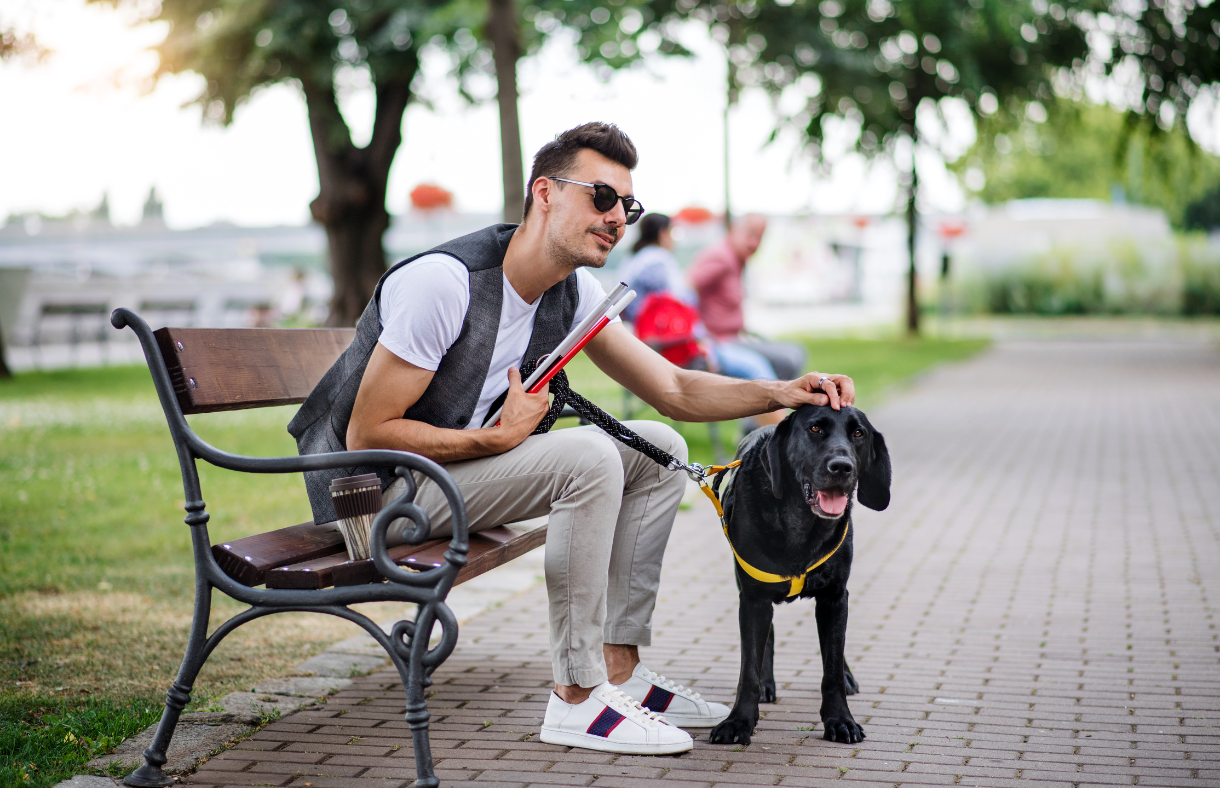November is National Assistive Technology Awareness Month. What comes to mind at the phrase “assistive technology”?
By formal definition, assistive technology is “any item, piece of equipment, or product system—whether acquired commercially off the shelf, modified, or customized—that is used to increase, maintain, or improve the functional capabilities of people with disabilities, excepting a medical device that is surgically implanted, or the replacement of such device.” Assistive technology (AT) includes:
- Breath- or eye-movement-operated devices for people with extensive paralysis
- Wheelchairs, scooters, walkers, canes, and crutches
- Hearing aids
- Noise-cancelling headphones worn to reduce overstimulation
- Caption-generating software on televisions, on personal digital devices, and on large screens at in-person events
- Apps for autism management, voice simulation, screen reading, or any form of augmentative or alternative communication

A World of Possibilities
Perhaps some of the above weren’t what you would have considered “assistive technology.” The term covers quite a variety of devices, including some (like the cane) that aren’t particularly high-tech. Care to guess what’s the most common assistive technology of all? Hint: Most people who use it don’t even have a “disability” in the standard sense.
Answer: Corrective vision lenses—eyeglasses and contacts! About 75 percent of people in the U.S. wear them at least part of the time. There are certain daily tasks, such as driving or reading small print, that many people with so-called typical abilities can’t perform with naked-eye vision. Corrective lenses allow them to see to carry out these tasks, and so are a technology that assists the user.
If you couldn’t answer the “most common” question, it’s nothing to be embarrassed about. Even if we limit “assistive technology” to gadgets designed for “real” disabilities, few people are familiar with every option. The range is, after all, enormous—even within individual categories. A quick online search can identify 30+ types of wheelchairs, over a dozen hearing-aid brands, and close to a thousand apps for autism alone.
“Apps aren’t what most people would think when they hear ‘assistive technology,’” notes Alejandra Gonzalez, BridgingApps Digital Navigator. “But many can work wonders, and are just as good as an AT device that costs thousands of dollars.”
Just What You Need—or Not?
As good as the more expensive device—and often better. Many a “lived to regret it” experience begins by investing in expensive AT on the basis of a memorable television commercial, an attractive website, or another unsolicited sales pitch. Occasionally, impulse AT purchases prove worth the money. More often, one of the following happens:
- You could have gotten the same device, or something just as good, elsewhere for a fraction of the price.
- The device turns out not to match your needs, and gets shoved into a closet and forgotten.
- The offer is a complete fraud, and the promised device never arrives after your money is sent—or the device arrives, but proves shoddy and dangerous.
- Worst-case scenario: Responding to an “offer” requires providing personal information that opens doors to large-scale rip-offs.
It pays to buy only from established and reputable companies. But you can save even more by not buying new technology at all—if you have an equivalent already on hand.

Assistive Technology in Everyday Devices
Many disability accommodations are now so “everyday” that society has almost forgotten they were introduced with any disability in mind. Curb cutouts are as useful for grocery carts as for wheelchairs. Television captions are turned on not solely for the benefit of those with hearing difficulties, but with any television program people may want to follow in the presence of background noise. (AARP The Magazine reported in October/November 2022 that 80 percent of people ages 18 to 24 now use the closed-captions option routinely.)
Likewise, you may find the perfect assistive technology on a device/app designed with able-bodied, neurotypical people in mind:
- Computer screens change type/image sizes for the benefit of limited vision.
- People with mental challenges benefit from microwave ovens that can’t be left burning; e-calendars that alert to regular appointments and when to leave; GPS apps that warn drivers when there’s a road hazard ahead; and smart locks that bolt doors absentmindedly left unlatched.
- Handheld remotes and voice-operated virtual assistants are doubly convenient with limited physical mobility.
- Virtual chatting increases human contact, decreases loneliness, and allows for doctor visits without the challenges of physically leaving home.
Helpful Hints
In short, “assistive technology” is any app or device that helps improve quality of life—and the deciding factor is not whether it was designed for a specific disability, nor how many people with disabilities use it, but how personally useful you find it.
Later this month we’ll be posting an article on choosing your best assistive technology. Here’s a quick-tips list for the meantime:
- Consult your regular doctor or therapist—or another professional who knows your needs personally—before choosing a model or brand.
- Don’t hesitate to ask your support group, social media network, or other peer contacts who have experience with assistive technology. While lay opinion shouldn’t replace professional advice, it provides many a unique insight.
- Safety and quality are non-negotiables, but don’t be afraid to trust your own preferences in other areas.
In conclusion, a few direct recommendations from our BridgingApps team.
- From Alejandra Gonzalez: “My favorite apps are Otter, Speechify, Inku, and Quizlet. Inku and Speechify are both amazing speech-to-text and text-to-speech apps. Quizlet allows kids to study on their own time, their own way.”
- App Search Tool for finding (often free) apps to meet specific needs
- Staff Picks blog posts on education, learning, teens at school, augmentative/alternative communication, bilingualism, and managing Down Syndrome

